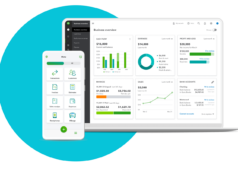
Whether you’re relatively new to the workforce or have years on the job, it’s important to prepare for retirement. The younger you are when you start to put money aside for your golden years, the better. However, it’s never too late to save.
Creating a retirement budget that you can follow is one of the best decisions you’ll ever make. First, it will keep you informed of how much money you’ve already saved and the amount you’ll need each month. Second, it’ll help you space out your spending once you stop working. Both of these are critical if you want to enjoy a comfortable retirement.
1. Avoid Unnecessary Challenges

For most people, retirement comes with financial challenges. The main issue is that so many retirees have limited funds in savings. Even when adding in Social Security benefits, the combined income is rarely enough. This is especially true if you want to do special things during your retirement, such as travel. If you’re not careful, whatever money you have will diminish quickly.
Unfortunately, a lot of individuals think of “budgeting” as something that creates limitations. However, when it comes to retirement, that’s not the case. The purpose of creating a working budget is to create more opportunities based on available money. In other words, it serves to protect retirees rather than limit them.
2. The Cost of Retirement

One of the first steps to create a retirement budget is to determine how much money you’ll need to live on. As for expenses, more than likely, you’ll spend less compared to when you worked. As a good rule, anticipate spending between 20 and 30 percent less than before you retired. However, to be on the safe side, it’s better to calculate your numbers using the higher estimates.
Keep in mind that several things factor in as to the exact amount of money you’ll need. These include where you live, your lifestyle, and the amount of funds you currently have in your savings account.
You also need to consider any pensions, Social Security benefits, and investments such as 401(k) and IRA accounts. In some instances, people receive money in the form of annuities, which also get factored in. As part of the budget, include anything applicable as income for your retirement years.
3. Calculating Expenses

Along with your income, you need to determine your monthly expenses. An easy way to do this is by looking over your bills from the previous six months before you retired. Then, you can use a tool online or create a spreadsheet. Either way, make two main columns, one for “essentials” and the other for “non-essentials.” That way, if you need to cut back, you can quickly see potential options.
One great (and free) tool for budgeting is Mint.com. This budgeting software is online and lets you link your bank and credit card accounts, making it much easier to track your expenses. You can also use planning software such as WealthTrace, which allows you to create a budget in the context of a detailed retirement plan.
Your monthly expenses include a host of things. Some of these are your mortgage or rent payment, utilities, groceries, gas, medication, outstanding loans, credit cards, and so on. Those need to go in the “essentials” column. For the “non-essentials,” include magazine subscriptions, book clubs, dining out, travel, etc.
By adding the expenses that you listed only in the “essentials” column, you’ll know how much money you need each month. If you have extra after meeting your obligations, then you can apply some of your income to the “non-essential” expenses.
Also, make sure to include any new expenses that arise after you retire. For the most part, your essential needs won’t change much once you stop working. However, you can anticipate a few differences. As an example, the cost of healthcare insurance might go up. That all depends on if your employer continues to offer coverage or if you need to purchase a policy.
Of course, once you reach the age of 65, you qualify for Medicare. With that, you have some excellent options. For instance, you can go with a policy that provides outstanding vision and dental care. When you’re ready to do this, consider meeting with a Medicare expert or financial advisor to help you select the best plan for the least amount of money.
Beyond changing and increasing expenses, remember that as a “senior,” you’ll also qualify for a lot of different discounts. To benefit from them, shop at a grocery store that provides this, ask your physician and dentist if they have lower rates for older patients, dine at restaurants that give seniors a reduced price on meals, and so on.
You need to include taxes in your retirement budget, as well. Considering your income will go down, you’ll pay less to the IRS. However, things like Social Security benefits, as well as withdrawals from tax-deferred traditional IRA and 401(k) accounts, get taxed.
4. The Fun Side of Retirement

After working for decades, you deserve to have some fun after retiring. That means you need to include recreational things in the budget, too. The amount of money you can spend toward this all depends on your income and monthly expenses. Yes, you may need to cut back on some of the fun things you enjoy doing, but don’t disregard everything.
On the spreadsheet, add another column for “fun expenses.” For this, list both nominal and higher costing activities. Often, retirees will enjoy one or two smaller outings each month and then one larger adventure once a year. That way, they have fun but without getting into a financial mess.
Can a 401K be Garnished
Garnishment is a method of court-ordered debt collection in which a creditor can take possession of a debtor’s wages or other funds from particular sources, such as insurance payments or government benefits. The protected status of funds held in qualified retirement accounts such as 401(k)’s vary by state and is also subject to federal law.
If you are wondering can 401k’s be garnished, we might have some answers. According to federal law, retirement accounts are generally exempt from garnishment unless the debt owed is for federally-guaranteed student loans, taxes owed to the IRS, alimony and/or child support payments. If any of these debts are present, the employer may be required to transfer money from the employee’s retirement account and send it to the creditor; however, this can only occur if authorized by a court order.
For non-federally guaranteed student loans, state laws dictate whether they are eligible for garnishment. For example, some states no longer allow garnishment of non-federally guaranteed student loan debt. It is important to understand the specific laws that apply in your state regarding exceptions and limitations on garnishment orders. By understanding state and federal laws related to creditors levying funds from your employer-sponsored 401(k) account you can be better prepared if or when that situation arises.
Final Thoughts
Fortunately, there are many ways to track your expenses these days and it’s easier than ever to do it online. Budgeting used to me a major pain for many people, but that is no longer the case. Everybody should be taking full advantage of the variety of ways there are to create a budget and stick to it.









